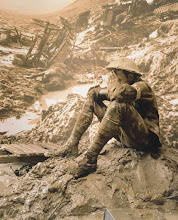Today, Wednesday June 24, I leave Damascus. Farewell to Abu Hassan the juice guy, my hosts the Nejem family, and the sights and smells of the Old City of Damascus that have become home over the last month. So long Syria. For the next few years, that is. Because I know I will be back. With a different cover story , perhaps. With peace? Ideally, though even before Syria come to terms with Israel, there will no doubt be reasons for my return to the Syrian Arab Republic.

On my last day in Damascus it was time to indulge in some classic Damascene tourism. Sure, I have strolled through the main drag of Souq al-Hamidiyya, letting the color and cries of the market draw me down the endless allies that split off from the central strip. But today was time to visit the heavyweights: the Umayyad Mosque, Azem Palace, the most celebrated of the city's bathhouses, Hammam Nur al-Din, and finally, the classic twilight views of the capital from atop Mount Qasioun.

The Umayyad Mosque lies near the center of the Old City. A laundry list of superlatives would not do justice to the magnificence of one of the world's oldest and largest mosques. Muslims of all stripes are drawn to the many venerated sights within the mosque's stone walls. Sunni congregate by the tombs of John the Baptist (honored as a prophet by Muslims and Christians alike) and Saladin. Shia make a beeline for the shrines dedicated the martyrs of Karbala, including the stand upon which the head of Hussein ibn Ali (Muhammad's grandson and the central figure of the Karbala narrative) was displayed after his forces were slaughtered by Umayyad troops at Karbala. Iranian ladies, swathed in black burqas, surround Hussein's shrine, liberally dispensing tears and Iranian rials covered in pictures of Khomeini.

What I found most endearing about the mosque is how relaxed it is despite the many places of veneration. Within the prayer-hall, men and women relax under green and crimson arabesque mosaics, making light conversation while children run about.

The sun drenched courtyard is even more alive. Foreign women draped in brown wizard's robe (loaned to them to ensure their modesty) dodge the chirping children whom slip and slide across the marble floor. There is none of the solemn distance or pagan mystery of European cathedrals and Tibetan temples. The Umayyad Mosque is at once animate and venerated, providing a worthy model of dynamic spirituality.

The Azem Palace is only a short walk away from the great mosque. An Ottoman governor established the palace in 1750, building on the grounds that in previous centuries had been home to the palaces of the Umayyad Caliph, and Roman and Byzantine governors. Today the complex is home to a cultural museum. But a brief visit is worth it for the design of the palace, widely regarded as the best example of Damascene architecture in the city. When I did not have small change to pay the student fee, the doorman just smiled and waved me in free of charge!
The next stop on my route was the most renowned bathhouse in Damascus, the Hammam Nur al'Din. The Kurdish run bathhouse traces its origins back to the eleventh century. Today it represents a dying breed, as the city's once numerous bathhouses are steadily vanishing as centuries-old traditions give way to modern indoor plumbing, allowing most Damascus residents to bathe at home. Although I have never had a particular weakness for getting saunaed and scrubbed by mustached manly men, traditional bathhouse culture has had a soft spot in my heart ever since I saw "Shower," a wonderful Chinese film about the disappearance of the traditional bathhouse in Beijing.

Today was my second trip to the hammam, after having first visited the all male bathhouse with two of my housemates earlier in the week. So when two friends from SAIS expressed interest in checking it out for themselves, I was eager to accompany them. The experience itself is hot, wet and foggy. After donning a sheet and clogs (in contrast to China, Arab culture refrains from bathing in the nude), we entered a steam room and were instructed to wash ourselves with the Aleppo olive oil soap to our hearts content. The rest of the experience consists of a hasty massage and a more painful session where an attendant goes to work on my arms and legs with a steel sponge. The best part is when its all over, and I sip tea with my friends in the thousand year old antechamber, wrapped up in towels like a Bedouin desert explorer.

Most visitors to Damascus begin their trip by gazing down upon the city from the height of Mount Qasioun. I finally made it to the mountaintop on my final night. After a perilous cab ride up the mountain, three friends from SAIS gathered with me for a farewell dinner. With the entire city lit up, I dined on chummus in Damascus for one last time. In Israel they have a saying that "when there is peace, we will travel to eat chummus in Damascus." Peace will come. And when it does, I look forward to sharing with my Israeli friends the sights and tastes of Damascus.




No comments:
Post a Comment